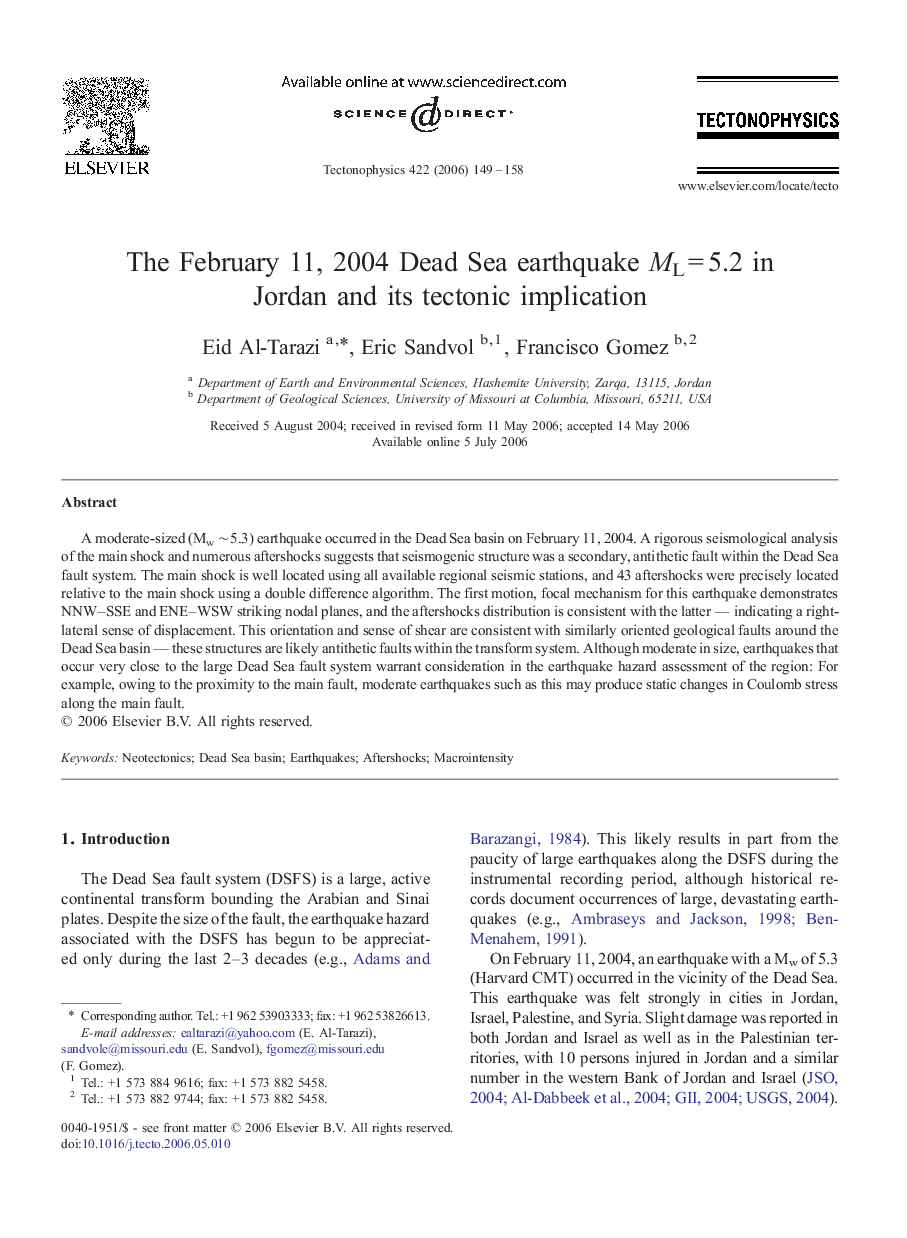| Article ID | Journal | Published Year | Pages | File Type |
|---|---|---|---|---|
| 4694860 | Tectonophysics | 2006 | 10 Pages |
A moderate-sized (Mw ∼ 5.3) earthquake occurred in the Dead Sea basin on February 11, 2004. A rigorous seismological analysis of the main shock and numerous aftershocks suggests that seismogenic structure was a secondary, antithetic fault within the Dead Sea fault system. The main shock is well located using all available regional seismic stations, and 43 aftershocks were precisely located relative to the main shock using a double difference algorithm. The first motion, focal mechanism for this earthquake demonstrates NNW–SSE and ENE–WSW striking nodal planes, and the aftershocks distribution is consistent with the latter — indicating a right-lateral sense of displacement. This orientation and sense of shear are consistent with similarly oriented geological faults around the Dead Sea basin — these structures are likely antithetic faults within the transform system. Although moderate in size, earthquakes that occur very close to the large Dead Sea fault system warrant consideration in the earthquake hazard assessment of the region: For example, owing to the proximity to the main fault, moderate earthquakes such as this may produce static changes in Coulomb stress along the main fault.
